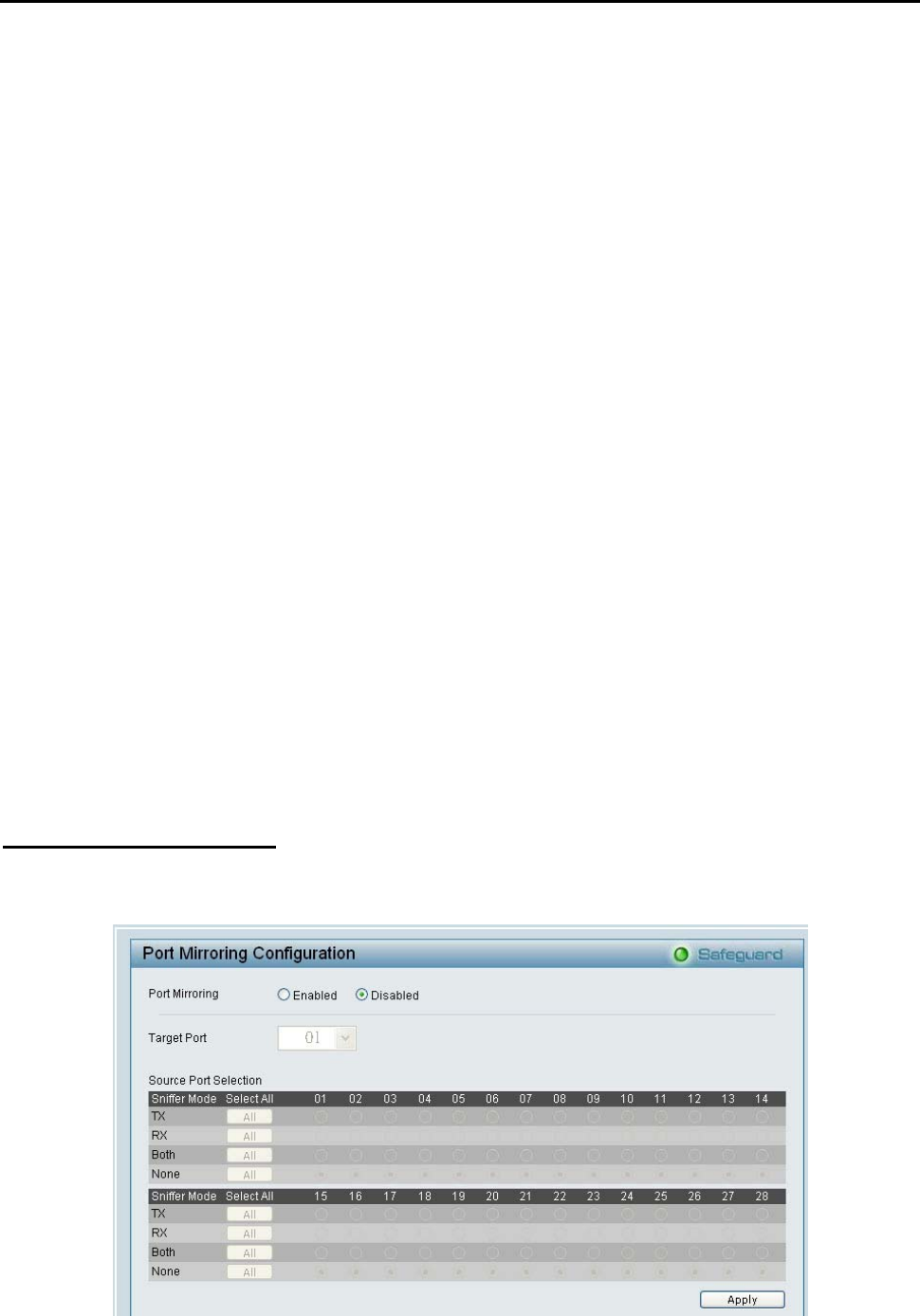
5 Configuration D-Link Web Smart Switch User Manual
detection of failed links, and thus faster topology adjustment. A draw-back of 802.1D is this absence of
immediate feedback from adjacent bridges.
After enabling STP, setting the STP Global Setting includes the following options:
Bridge Priority: This value between 0 and 65535 specifies the priority for forwarding packets: the lower the
value, the higher the priority. The default is 32768.
Bridge Max Age: This value may be set to ensure that old information does not endlessly circulate through
redundant paths in the network, preventing the effective propagation of the new information. Set by the Root
Bridge, this value will aid in determining that the Switch has spanning tree configuration values consistent
with other devices on the bridged LAN. If the value ages out and a BPDU has still not been received from the
Root Bridge, the Switch will start sending its own BPDU to all other switches for permission to become the
Root Bridge. If it turns out that the Switch has the lowest Bridge Identifier, it will become the Root Bridge. A
time interval may be chosen between 6 and 40 seconds. The default value is 20.
Bridge Hello Time: The user may set the time interval between transmissions of configuration messages by
the root device, thus stating that the Switch is still functioning. The default is 2 seconds. (Max Age has to
have a value bigger than Hello Time)
Bridge Forward Delay: This sets the maximum amount of time that the root device will wait before changing
states. The default is 15 seconds.
Root Bridge: Displays the MAC address of the Root Bridge.
Root port: Displays the root port.
Root Path Cost: Shows the root path cost.
In addition to 802.1D global settings, the D-Link Web smart switch allows the user to configure 802.1D STP
by ports. Select From Port / To Port to specify the ports you want to configure.
Control: select STP to let a port partake in the STP calculations and send/receive BPDU (Bridge Protocol
Data Unit) packets. When selecting STP, the corresponding port will be treat as a normal STP port which will
process the procedure Listening>Learning>Forwarding to prevent the loop happen. By selecting Disable, all
the STP activities will be shut down by ports. You may also appoint this port to be the STP Edge port to
forward STP packet only, in order to speed up the overall STP calculations.
Path Cost: This defines a metric that indicates the relative cost of forwarding packets to specified port list.
The lower the number, the greater the probability the port will be chosen to forward packets. The default
value is 19.
Path Priority: Select a value between 0 and 255 to specify the priority for a specified port for forwarding
packets: the lower the value, the higher the priority. The default is 128.
Configuration > Port Mirroring
Port Mirroring is a method of monitoring network traffic that forwards a copy of each incoming and/or
outgoing packet from one port of the Switch to another port where the packet can be studied. This enables
network managers to better monitor network performances.
Figure 56 – Configuration > Port Mirroring
3
3
3
3


















